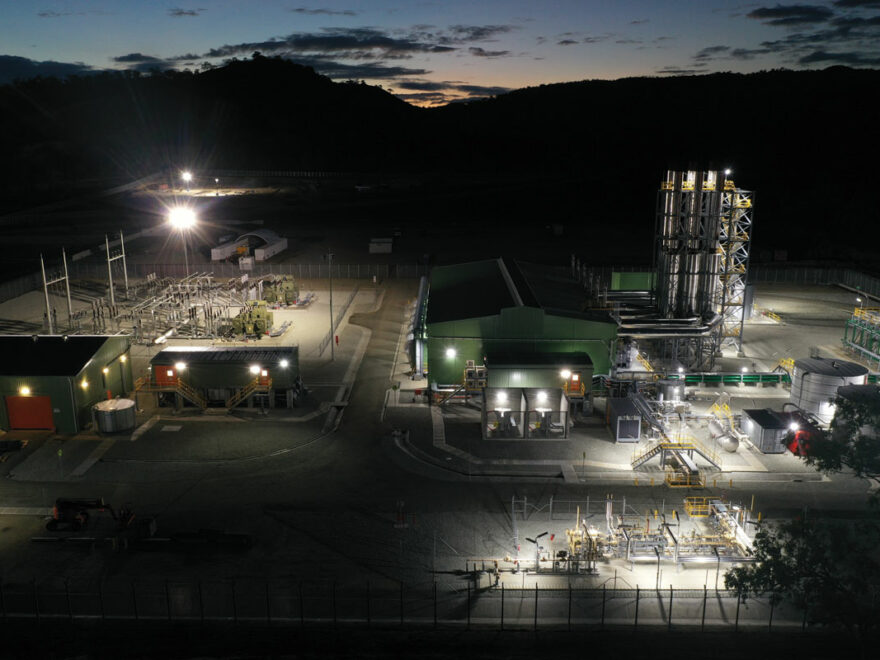Which Protection Method is Right for You?
When specifying a luminaire for use in a hazardous area, one of the most important things to consider is certification.
In simple terms, the luminaire needs to be approved to an appropriate level, based on the environment in which it is being installed. If your site has been designated as a Zone 1 hazardous area, you will need to specify a luminaire which has been approved to Zone 1 standards.
Beyond this, it’s also important to look at the method of protection used during certification; this can have a significant impact on how the luminaire has been designed. While there are various different protection methods, two are particularly common in Ex luminaires; Ex e ‘increased safety’, and Ex d ‘flameproof’.
Ex e – luminaires approved to this standard are designed to be cool running and prevent arcs, sparks and hotspots from occurring. In short, this protection method is focused on preventing the risk of explosion by ensuring an ignition source cannot arise.
Ex d – luminaires approved to this standard must be able to safely contain an explosion, and the accompanying pressure that develops. They must prevent any fire or sparks from escaping the enclosure and into the surrounding explosive environments. This protection method is therefore focused on containment rather than prevention. With a basic understanding of the principles behind these protection methods, we’ll now look in detail at how this dictates the way a luminaire can be designed, and how that impacts an end user.
Ease of Maintenance
One of the main differences (between luminaires certified using Ex e or Ex d standards) is how easy they are to maintain. Ex d luminaires are designed using flamepaths. The flamepaths are essential to the luminaire’s Ex certification, extinguishing flames before they can escape into the external environment.
To maintain a suitable flame gap, a number of bolts (tightened to a specific torque) are used. These must be removed in order to gain access to internal components for maintenance procedures. Not only does this make maintenance more time consuming, it also makes it more complicated for the person carrying out the maintenance. They must be careful to ensure the correct flame gap is retained when the housing is put back together. Failure to do so could invalidate the Ex certification.
With Ex e protection there is no requirement to use flamepaths, meaning these problems are eradicated and the luminaire can be much easier to maintain.
Ease of Installation
Another drawback of trying to ‘contain’ an explosion is the way in which a luminaires housing must be designed; it must be suitably thick to contain an explosion, and the pressure that comes with it. An Ex d luminaire therefore tends to be bigger, bulkier, and heavier than a comparable Ex e fitting.
By being lighter and more compact, Ex e luminaires are easier to install and maintain. When designed using strong materials, such as Aluminium or Stainless Steel, they can still retain high levels of durability and robustness.
Temperature Ratings & Gas Groups
Due to changes in the property of a gas or vapor at low temperatures, most Ex d luminaires are not suitable for installation in areas below -20° C. Because Ex e luminaires are designed to prevent an ignition source occurring (rather than preventing gases from entering or escaping), they are likely to have a much wider temperature rating.
Of course, you should always check the temperature rating of any piece of ATEX equipment, but having this understanding should help to make specifying easier.
Further to this, if your application requires equipment which is certified for IIC gas groups, it may be difficult to find a suitable Ex d luminaire. Because the gases in the IIC gas group are deemed highest in risk, an Ex d fitting must use tighter flame gaps (which are more complex to manufacture). For this reason, fewer Ex d fittings exist which are approved for IIC applications, and those that do tend to be expensive and even more difficult to maintain.
Wireless Technology
Introducing new technology into hazardous areas is always a challenge, but we are beginning to see the emergence of smart / IoT enabled luminaires (as is more common in industrial and commercial markets).
As we identified earlier, an Ex d luminaire’s housing must be suitably thick to contain an explosion, and the pressure that comes with it. Much like it can be difficult to achieve a good Wi-Fi signal in a house with thick walls, an Ex d housing may not be the best solution for wireless technology.
In contrast, with the Ex e protection method, there is far more scope to integrate this kind of technology into the luminaire.


